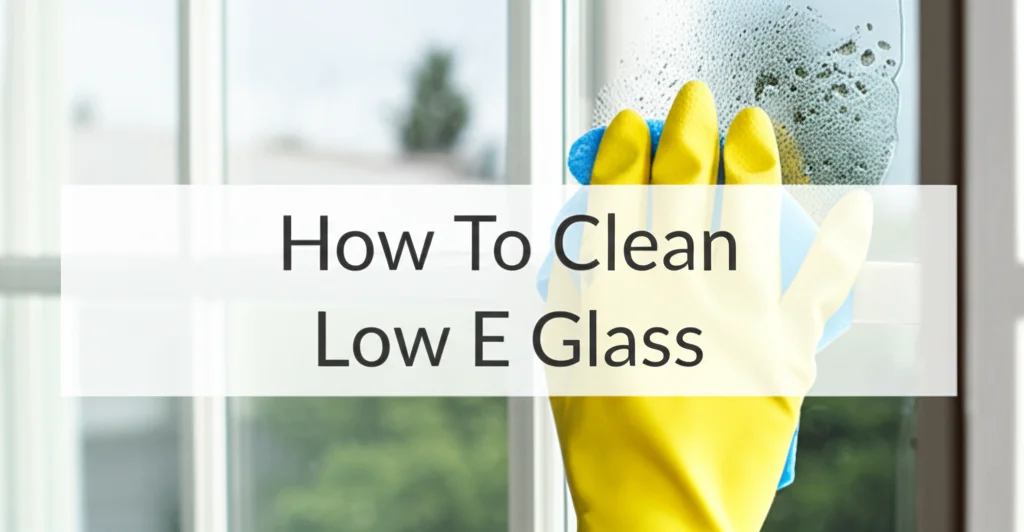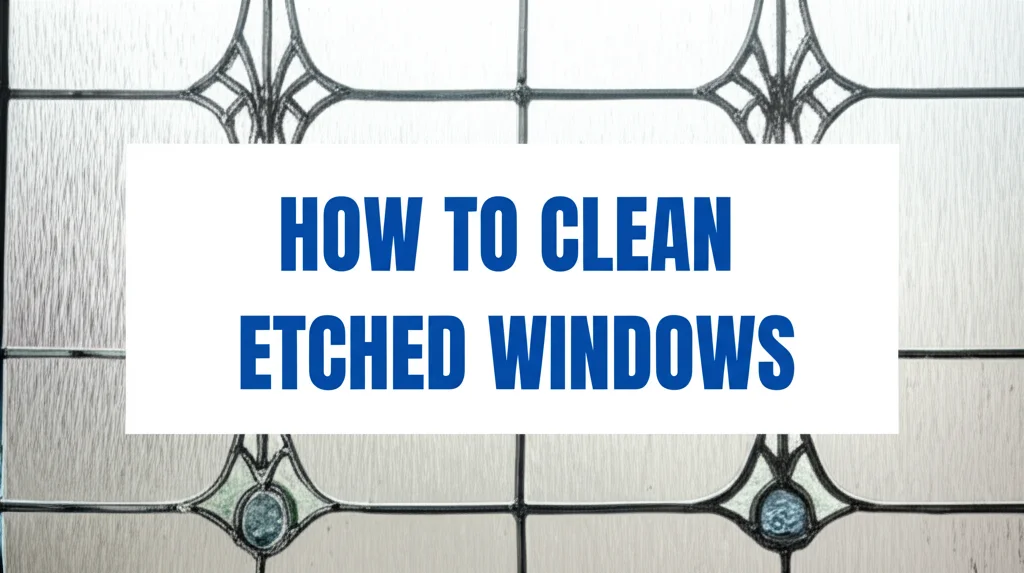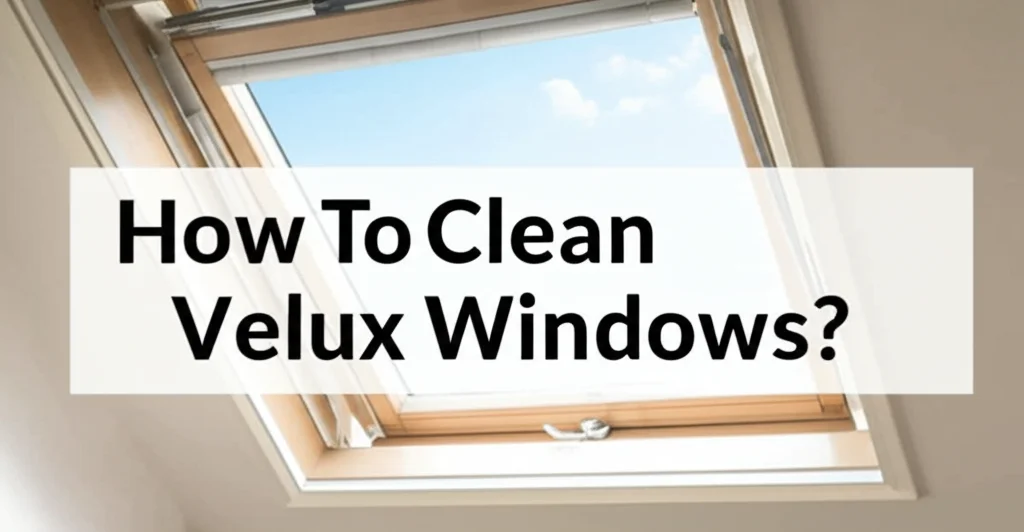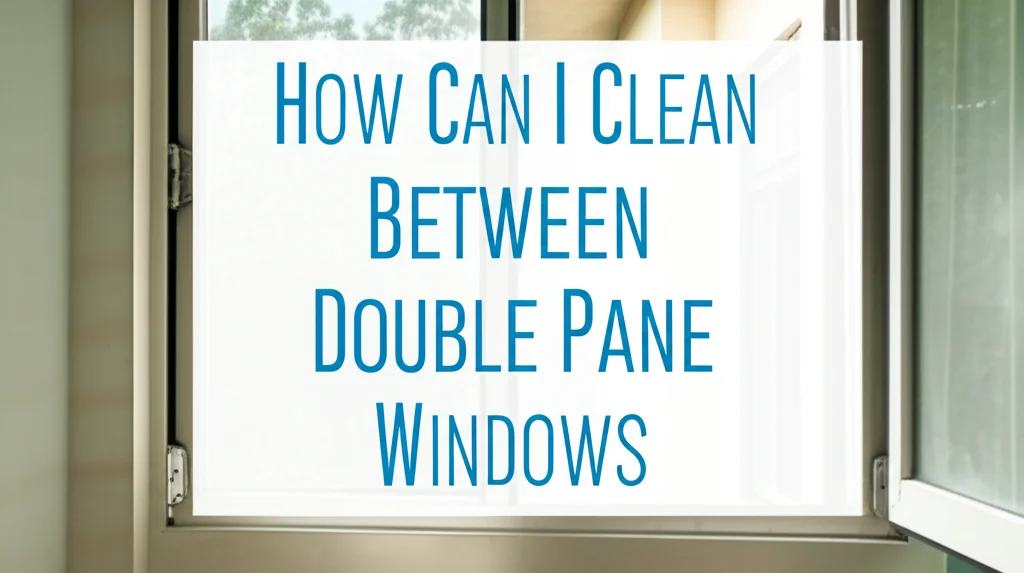· Home Cleaning · 6 min read
How To Clean Low E Glass

Sparkling Views: How To Clean Low E Glass
Have you noticed a film on your windows that just won’t come off, even after repeated cleaning attempts? You might be dealing with Low-E glass, and it requires a slightly different approach than standard windows. Low-E (low-emissivity) glass is coated with a thin, transparent metallic layer to improve energy efficiency, reducing heat transfer. Cleaning this type of glass incorrectly can damage the coating, so knowing the right techniques is crucial. This article will guide you through everything you need to know about how to clean Low-E glass, ensuring streak-free results and preserving its energy-saving benefits. We’ll cover the best cleaning solutions, tools, and methods to keep your windows looking their best.
Quick Answer: To clean Low-E glass, use a mixture of distilled water and white vinegar, apply with a microfiber cloth, and gently wipe in overlapping strokes. Avoid abrasive cleaners, scrub brushes, and excessive pressure to protect the coating.
Key Takeaways:
- Use distilled water to prevent mineral deposits.
- Vinegar is a safe and effective cleaning agent.
- Microfiber cloths are essential for streak-free results.
- Avoid harsh chemicals and abrasive tools.
Understanding Low-E Glass & Its Cleaning Needs
Low-E glass is a fantastic innovation in window technology. It helps regulate indoor temperatures, lowering energy bills and increasing comfort. However, the very coating that provides these benefits is delicate. Traditional window cleaners often contain harsh chemicals that can degrade the Low-E coating over time, leading to cloudiness or streaking. It’s important to understand that this coating is incredibly thin – often thinner than a wavelength of light! This means even gentle abrasion can cause damage. Therefore, a gentle approach is always best when cleaning Low-E glass.
The Best Cleaning Solution for Low-E Glass
Choosing the right cleaning solution is the first step to successfully cleaning Low-E glass. Forget the ammonia-based cleaners you might typically reach for. They are too harsh and can cause irreversible damage. Instead, opt for a simple, homemade solution that’s both effective and safe.
Here’s a recipe:
- 1 part white vinegar
- 9 parts distilled water
Distilled water is crucial because tap water contains minerals that can leave spots and streaks. White vinegar is a mild acid that effectively cuts through grime and dirt without harming the Low-E coating. Mix the solution in a spray bottle and shake gently to combine. You can also add a drop of dish soap, but use it sparingly, as excessive soap can leave a residue.
Tools You’ll Need for a Streak-Free Shine
Having the right tools makes all the difference when cleaning Low-E glass. Using the wrong materials can scratch the coating or leave unsightly streaks. Here’s what you’ll need:
- Microfiber cloths: These are essential! They are soft, non-abrasive, and excellent at lifting dirt and grime. Avoid paper towels, as they can leave lint behind.
- Spray bottle: For applying your cleaning solution.
- Bucket (optional): For larger windows, a bucket can be helpful for holding your cleaning solution.
- Squeegee (optional): A high-quality squeegee can help achieve a streak-free finish, especially on large windows.
- Soft brush attachment (optional): For removing loose dirt and debris before cleaning.
Step-by-Step Guide to Cleaning Low-E Glass
Now that you have your solution and tools, let’s get cleaning! Follow these steps for sparkling, streak-free Low-E glass:
- Remove Loose Debris: Gently brush away any loose dirt, dust, or debris from the window surface using a soft brush attachment on your vacuum or a dry microfiber cloth.
- Apply Cleaning Solution: Lightly spray the Low-E glass with your vinegar and distilled water solution. Avoid saturating the glass, as excessive moisture can drip and cause streaks.
- Wipe Gently: Using a clean microfiber cloth, wipe the glass in overlapping strokes. Apply gentle pressure, and avoid scrubbing vigorously. Work from top to bottom to prevent drips.
- Squeegee (Optional): If using a squeegee, overlap each stroke slightly and wipe the blade clean after each pass.
- Dry and Buff: Use a clean, dry microfiber cloth to buff the glass and remove any remaining streaks or moisture.
If you’re looking for more ways to keep your home clean, consider checking out https://www.beacleaner.com/how-to-clean-vinyl-plank-flooring/ for tips on maintaining your floors.
What to Avoid When Cleaning Low-E Glass
Knowing what not to do is just as important as knowing what to do. Here’s a list of things to avoid when cleaning Low-E glass:
- Abrasive Cleaners: Avoid scouring powders, steel wool, and other abrasive cleaners.
- Harsh Chemicals: Stay away from ammonia, bleach, and solvents.
- Scrub Brushes: These can scratch the delicate coating.
- Excessive Pressure: Gentle wiping is all that’s needed.
- Cold Water on Hot Glass: This can cause the glass to crack.
- Direct Sunlight: Cleaning in direct sunlight can cause the solution to dry too quickly, leaving streaks.
Dealing with Stubborn Stains on Low-E Glass
Sometimes, despite your best efforts, stubborn stains remain. For these, a little extra attention is needed.
- Bird Droppings: Soak the area with warm water and gently wipe with a microfiber cloth. If the stain persists, try a paste of baking soda and water, applying it gently and rinsing thoroughly.
- Hard Water Spots: Vinegar is your friend here! Apply a stronger vinegar solution (equal parts vinegar and distilled water) and let it sit for a few minutes before wiping clean.
- Tree Sap: Use a plastic scraper to gently remove the sap, then clean the area with your vinegar and water solution. You might also find helpful tips on removing tough stains at https://www.beacleaner.com/how-to-get-motor-oil-out-of-carpet/.
Frequently Asked Questions (FAQs)
Q: Can I use a steam cleaner on Low-E glass?
A: While some steam cleaners are marketed as safe for Low-E glass, it’s generally best to avoid them. The high heat can potentially damage the coating. If you choose to use a steam cleaner, test it on an inconspicuous area first and use the lowest heat setting.
Q: How often should I clean my Low-E windows?
A: The frequency depends on your location and environmental factors. Generally, cleaning your Low-E windows twice a year is sufficient. However, if you live in a dusty or polluted area, you may need to clean them more often.
Q: Will cleaning Low-E glass with the wrong products void the warranty?
A: Yes, using harsh chemicals or abrasive cleaners can void the warranty on your Low-E glass. Always check the manufacturer’s recommendations before cleaning.
Q: Is it okay to use a commercial glass cleaner specifically labeled for Low-E glass?
A: Yes, if the product is specifically formulated for Low-E glass and has been tested and approved by the manufacturer. Always read the label carefully and follow the instructions.
Conclusion: Maintaining Your Low-E Glass for Years to Come
Cleaning Low-E glass doesn’t have to be a daunting task. By using the right cleaning solutions, tools, and techniques, you can keep your windows sparkling clean and maintain their energy-efficient properties for years to come. Remember to avoid harsh chemicals and abrasive materials, and always opt for a gentle approach. Prioritizing the longevity of your Low-E glass will save you money on energy bills and ensure clear, beautiful views. So, grab your microfiber cloths and vinegar solution, and enjoy the benefits of clean, efficient windows! For more cleaning tips and tricks, explore our other articles, like https://www.beacleaner.com/how-to-clean-hardwood-floors-with-vinegar/ to keep your entire home looking its best.




